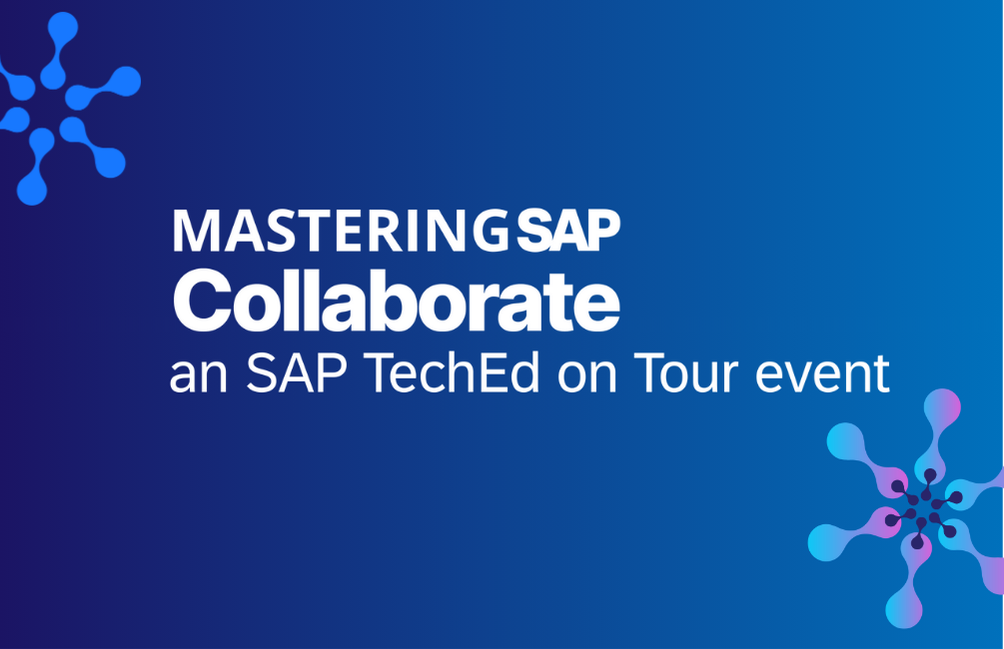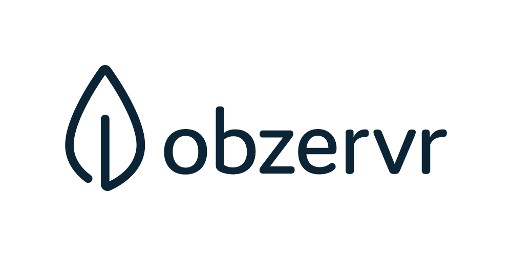SAP Enterprise Asset Management
SAP Asset Analytics | SAP Asset Tracking | SAP EAM | SAP Field Service | SAP GIS | SAP Maintenance Management | SAP Mobile Asset Management
Filter By
Browse By
- SAP Analytics and AI
- SAP Application Development and Integration
- All SAP Application Development and Integration
- SAP ABAP
- SAP ABAP Development Tools
- SAP ABAP Test Cockpit
- SAP API Management
- SAP BAPI
- SAP Basis
- SAP BRF
- SAP Business Application Studio
- SAP CMS
- SAP Design Studio
- SAP Development Tools
- SAP DevOps
- SAP EAI
- SAP EDI
- SAP Extension Suite
- SAP Fiori
- SAP Fiori Elements
- SAP Integration Suite
- SAP Low Code Application Development
- SAP Low Code Automation
- SAP Netweaver
- SAP Release Management
- SAP UI5
- SAP Web Application Server
- SAP Web IDE
- SAP Business Process Management
- SAP Center of Excellence
- SAP CIO
- SAP Customer Experience
- SAP Data and Data Management
- All SAP Data and Data Management
- SAP BW
- SAP BW/4HANA
- SAP Crystal Reporting
- SAP Data Archiving
- SAP Data Center
- SAP Data Governance
- SAP Data Integration
- SAP Data Migration
- SAP Data Quality
- SAP Data Services
- SAP Data Strategy
- SAP Data Visualization
- SAP Data Warehouse Cloud
- SAP DMS
- SAP Document Control
- SAP EIM
- SAP ETL
- SAP ETL Tools
- SAP HANA
- SAP HANA Administration
- SAP HANA Deployment Infrastructure
- SAP HANA Studio
- SAP Master Data
- SAP Master Data Governance
- SAP MDM
- SAP Enterprise Architect
- SAP Enterprise Asset Management
- SAP ERP
- SAP Finance
- All SAP Finance
- SAP Accounting
- SAP AR AP
- SAP Asset Accounting
- SAP Billing Systems
- SAP BPC
- SAP BRIM
- SAP Cash Management
- SAP Central Finance
- SAP Controlling
- SAP COPA
- SAP Cost Center Accounting
- SAP e-invoicing
- SAP FICO
- SAP Finance Automation
- SAP Financial Closing Cockpit
- SAP Financial Consolidation
- SAP Financial Planning
- SAP FX Risk
- SAP General Ledger
- SAP Global Tax Management
- SAP Hyperion
- SAP Order to Cash
- SAP Payment Processing
- SAP Profitability Analysis
- SAP Rebate Management
- SAP S/4HANA Finance
- SAP Universal Journal
- SAP Governance Risk and Compliance
- SAP Human Capital Management
- SAP Intelligent Technologies
- SAP Platform and Technology
- All SAP Platform and Technology
- SAP Business Technology Platform
- SAP Cloud Connector
- SAP Cloud Integration Platform
- SAP Cloud Migration
- SAP Cloud Platform
- SAP Cloud Providers
- SAP Cloud Strategy
- SAP Container Platform
- SAP Digital Asset Management
- SAP Digital Integration Hub
- SAP Digital Signature
- SAP HANA Enterprise Cloud
- SAP HEC
- SAP Hyperscalers
- SAP Infrastructure
- SAP Messaging
- SAP Smart Forms
- SAP Quality and Testing
- SAP Security
- SAP Spend Management
- SAP Supply Chain Management
- All SAP Supply Chain Management
- SAP APO
- SAP Asset Management
- SAP Business Network
- SAP Digital Manufacturing Cloud
- SAP Digital Twin
- SAP EWM
- SAP IBP
- SAP Inventory Management
- SAP Label Printing
- SAP Logistics
- SAP Manufacturing
- SAP Manufacturing Automation
- SAP MES
- SAP MII
- SAP MM
- SAP MRO
- SAP MRP
- SAP Order Management
- SAP Plant Maintenance
- SAP PLM
- SAP Production Planning
- SAP S&OP
- SAP SD
- SAP SPM
- SAP Supply Chain Planning
- SAP Track and Trace
- SAP Transportation Management
- SAP System Administration
What is Enterprise Asset Management?
Enterprise Asset Management (EAM) in SAP focuses on managing and maintaining an organization’s assets throughout its lifecycle. It employs systematic approaches such as asset tracking, planning, maintenance, and analysis to ensure optimal asset utilization and performance.
What is Enterprise Asset Management?
Enterprise Asset Management (EAM) in SAP focuses on managing and maintaining an organization’s assets throughout its lifecycle. It employs systematic approaches such as asset tracking, planning, maintenance, and analysis to ensure optimal asset utilization and performance.
By leveraging advanced technologies such as IoT (Internet of Things) sensors, predictive analytics, and cloud-based platforms, Enterprise Asset Management (EAM) in SAP enables organizations to monitor asset health, schedule preventive maintenance, manage repairs, and make informed decisions on asset acquisition or disposal. This proactive and data-driven approach to asset management helps organizations minimize downtime, reduce costs, extend asset lifespan, and improve overall operational productivity.
SAP Enterprise Asset Management (EAM) empowers organizations to align their asset management best practices with their broader organizational goals and achieve sustainable competitive advantage.
How Does an EAM System Work?
As the landscape of Enterprise Asset Management (EAM) in SAP continues to evolve, traditional on-premise systems have given way to modern cloud-based solutions. This technological advancement brings advantages like increased data storage capacities, enhanced security measures, and seamless integration with complementary applications such as supply chain management systems, mobile workforce management systems, Internet of Things (IoT) sensor systems, GIS (geographic information systems), GPS, and various other applications. By leveraging cloud platforms, organizations can efficiently manage their assets and also benefit from scalability, flexibility, and accessibility to real-time information while optimizing their asset management processes and driving operational excellence. EAM involves the following steps:
- Collecting and storing asset data in the cloud, utilizing the cloud’s agility to centralize asset information and generate analytical insights.
- Using data to guide asset strategy and optimize productivity by leveraging ML and predictive analytics to assess risks.
- Proactively schedule and maintain inspections, prioritize critical assets to minimize downtime, and resolving issues.
- Extending EAM system capabilities to workers enables management of work orders, asset processes, remote tracking, and maintenance process management.
Why is Asset Management Important?
Asset management is crucial for organizations across industries as it enables them to optimize the use of physical assets while minimizing downtime and maximizing returns. It also helps mitigate risks by proactively addressing potential failures and ensuring asset reliability. Informed decision-making is facilitated by analyzing asset data, allowing organizations to strategically plan investments, optimize portfolios and support regulatory compliance and ensure adherence to standards and regulations. Overall, effective asset management enhances operational efficiency, reduces risks, supports decision-making, and leads to improved profitability and long-term success.
SAP Intelligent Asset Management
SAP offers SAP Intelligent Asset Management, a suite of solutions that “enables an organization to use sensor technologies and predictive analytics to improve asset health.” The four solutions and some of their capabilities include:
- SAP Asset Intelligence Network SAP: Asset Intelligence Network offers collaborative capabilities and automated equipment tracking and enables organizations to seamlessly connect with stakeholders across the asset lifecycle. By leveraging this network, businesses can effectively manage and maintain their assets while benefiting from real-time insights. The platform automates equipment tracking and streamlines asset management processes, enhances operational efficiency, and enables proactive decision-making regarding maintenance, repairs, and replacement. SAP Asset Intelligence Network empowers organizations to optimize their EAM strategies, improve asset performance, and drive operational excellence in a collaborative and automated environment.
- SAP Predictive Asset Insights: SAP Predictive Asset Insights provides a 360-degree view of organizational assets and leverages advanced predictive analytics to generate a comprehensive view of assets, including their condition, performance, and maintenance requirements. The 360-degree view allows for real-time asset monitoring and tracking, enabling proactive maintenance and optimized asset utilization. With advanced predictive analytics algorithms, the solution enables forecasting asset failures and finding potential issues before they occur. By harnessing the power of data and analytics, SAP Predictive Asset Insights empowers organizations to make data-driven decisions, reduce downtime, improve operational efficiency, and enhance the overall performance and reliability of their asset portfolio.
- SAP Mobile Asset Management: SAP Mobile Asset Management streamlines work order management and enhances asset maintenance processes. The solution enables efficient work order creation, assignment, and tracking, empowering field workers and other users to access and update critical asset information in real time through mobile devices. SAP Mobile Asset Management allows organizations to optimize resource allocation, improve response times, and ensure the timely completion of maintenance tasks. The cloud-based deployment provides seamless integration, enabling organizations to harness the benefits of advanced analytics, IoT sensors, and other complementary applications to enhance asset management practices.
- SAP Asset Strategy and Performance Management: SAP Asset Strategy and Performance Management optimizes asset performance and enhances maintenance strategies by leveraging asset information management and failure modes and effects analysis (FMEA). Asset information management allows to capture, store, and manage critical asset information, including technical specifications, maintenance history, and documentation. This centralized repository enables easy access to asset data, facilitating informed decision-making and streamlined maintenance processes. The failure modes and effects analysis (FMEA) module enable organizations to identify potential failure modes of assets, assess their potential impact, and develop appropriate preventive and corrective maintenance strategies. SAP Asset Strategy and Performance Management empowers organizations to maximize the value of their assets, reduce downtime, and enhance operational efficiency through effective asset information management and failure modes analysis.
Join SAPinsider to access opportunities for networking and engagement in the dynamic SAP ecosystem. As a member, you will have access to a wealth of valuable resources and content tailored to SAP technologies and best practices like the latest research reports, articles, webinars, and events that will keep you informed and ahead of the curve.
SAPinsider membership grants you exclusive access to in-depth analyses, expert insights, and practical guidance that will empower you to navigate the ever-evolving SAP landscape with ease. SAPinsider membership will enable you to remain one step ahead and harness the latest trends, innovations, and strategies to drive your own powerful digital transformations, optimize your SAP investments, and unlock business success.
90 results
-

- SAP Enterprise Asset Management
 Premium
Premium
Getting to Go-Live: A Practical Guide to SAP Asset Performance Management with Embedded IoT
The session provides insights on successfully implementing SAP Asset Performance Management (APM) with Enterprise Internet of Things (EIoT), focusing on practical strategies for data alignment, utilising IoT features, and streamlining asset and risk data integration through APM APIs to enhance predictive maintenance and decision-making. Mastering SAP Premium Access Membership Required You must be a Mastering…
-

- SAP Enterprise Asset Management
 Premium
Premium
Mastering Procurement Process Orchestration with an Agility Layer: A Blueprint for Enterprise Transformation
In this presentation, Kal Marshall will explore the critical need for advanced process orchestration— with a procurement example from the US Army. Hear details on the development and initial deployment of the Army Contract Writing System (ACWS), built on the Appian low-code platform in just 23 weeks. Learn how many complex organizations are creating an...…
-

- SAP Enterprise Asset Management
 Premium
Premium
Demo: SAP Business AI – Practical Use Cases and Value for Asset and Supply Chain Managers
In this session we highlight the AI capabilities that SAP is already providing with our Asset Management and Supply Chain solutions, from Joule (the AI Copilot for SAP), through to embedded and premium AI capabilities across the SAP portfolio. Join us to see how SAP Business AI can provide value to your business. Click HERE...…
-
-

- SAP Enterprise Asset Management
 Premium
Premium
Unleashing the Power of Collaboration for Real-Time Visibility and Risk Management
The SAP Business Network transforms supply chain management by enhancing process automation, inventory and quality management, and shipment tracking, enabling real-time visibility and risk management essential for efficiency and customer satisfaction in a competitive market. Mastering SAP Premium Access Membership Required You must be a Mastering SAP Premium Access member to access this content.Join NowAlready…
-

- SAP Enterprise Asset Management
 Premium
Premium
SAP’s Evolution Since 1999: Has EAM Truly Transformed for End Users Over 25 Years?
From SAP R3 3.1h to S/4 HANA 2021, there have been numerous updates in EAM. But has it really changed? From an End User’s perspective, not significantly. For many End Users, especially Tradespeople and Operational personnel, the system hasn’t changed much. Over the years, businesses have become more data-driven, building analytics from SAP data on...…
-

- SAP Enterprise Asset Management
 Premium
Premium
Foodstuffs South Island: Leading a Bold Digital Transformation Across FMCG Operations
Foodstuffs South Island is revolutionising its grocery retail and supply chain operations through a comprehensive digital transformation powered by SAP technologies and strategic partnerships, aiming for enhanced efficiency and sustainability. Mastering SAP Premium Access Membership Required You must be a Mastering SAP Premium Access member to access this content.Join NowAlready a member? Log in here
-

- SAP Enterprise Asset Management
 Premium
Premium
Help Is One Click Away at Contact Energy – Empowering Fiori Users with SAP Enable Now
In June 2023, Contact Energy transitioned to SAP S/4HANA 2021, focusing on user adoption and optimising Enterprise Asset Management experiences through Fiori UX, while leveraging digital platforms and agile methodologies to ensure ongoing engagement and system utilisation. Mastering SAP Premium Access Membership Required You must be a Mastering SAP Premium Access member to access this…
-
-

- SAP Enterprise Asset Management
 Premium
Premium
Aligning EAM and SCM is no Longer a Wish, it’s a Strategic NEED!
Enterprise Asset Managers (EAMs) and Supply Chain Managers are inextricably linked—each relies on the other to deliver safety, reliability, and profitability across asset-intensive industries. Physical assets require timely, high-quality parts, materials, and services to perform. Likewise, supply chains depend on accurate, forward-looking asset strategies to forecast demand, reduce working capital, and avoid costly disruptions. When...…
-

- SAP Enterprise Asset Management
 Premium
Premium
From Chaos to Control: Driving Maintenance Effectiveness with Standardised Work Plans
The session highlights the importance of transitioning from reactive maintenance to standardised maintenance job plans to enhance asset reliability and efficiency, demonstrating how implementing a framework for precision-driven work can significantly improve safety, workforce productivity, and data quality within an SAP EAM environment. Mastering SAP Premium Access Membership Required You must be a Mastering SAP…
-

- SAP Enterprise Asset Management
 Premium
Premium
Synergy’s Secret to Saving Millions Annually on SAP HANA Licensing — Learn to Leverage the Most Underused Standard Feature
Synergy's proactive management of their SAP HANA database through Data Volume Management (DVM) resulted in a 7.5 TB reduction in database size and deletion of 8.6 billion records, leading to significant annual savings in licensing costs and improved system performance ahead of their S/4HANA migration. Mastering SAP Premium Access Membership Required You must be a…
Become a Member
Unlimited access to thousands of resources for SAP-specific expertise that can only be found here.
Upcoming Events
-

Mastering SAP Collaborate an SAP TechEd on Tour event
November 12 - 14, 2025
Sydney, New South Wales
Australia
View Event
Related Vendors
Your request has been successfully sent

